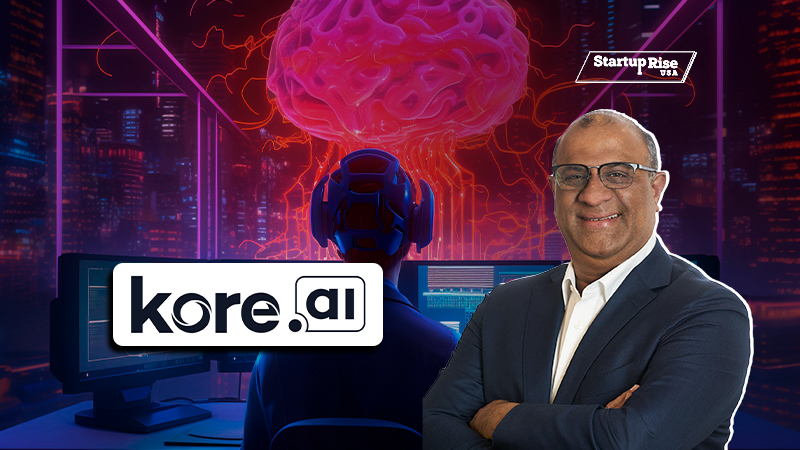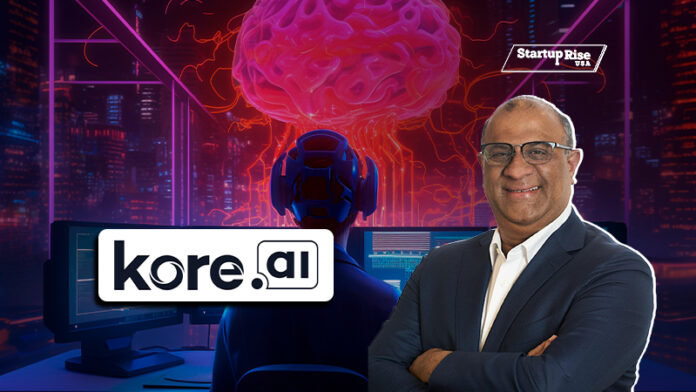
Early Roots & Tech Beginnings
Raj Koneru hails from Hyderabad, India, and studied at Birla Institute of Technology and Science (BITS), Pilani.
His earliest entrepreneurial ventures included founding iTouchPoint, Seranova, and Intelligroup, building experience across enterprise software, services, and mobile solutions.
Later, Raj founded Kony, a notable player in cloud‐based mobile app development, which gave him deep insight into how enterprise software is built, adopted, and scaled.
These formative ventures taught Raj lessons about usability, scaling architecture, enterprise sales, and the friction of legacy systems — lessons that would carry into his next chapter.
The Spark: Conversational AI & Enterprise Needs
Around the early 2010s, Raj saw a rising gap: enterprises were automating workflows, but customer and internal interactions remained siloed, static, and manual. Chatbots were simplistic. Voice interfaces were nascent.
The friction of customer support, FAQs, internal knowledge access, HR helpdesks, and other conversational workflows persisted.
Read Also- When Sound Meets Soul: The Journey of Suno AI
He realized conversational AI — combining natural language understanding, dialogue orchestration, voice, and integrations — could become the interface layer for many enterprise systems. But few platforms were enterprise-ready: scalable, secure, compliant, and interoperable with other systems..
He founded Kore.ai in 2013 with the vision of building a conversational AI platform that enterprises could use to automate interactions with customers, employees, and partners — with the flexibility of a platform and the power of pre-built solutions.
From Platform to Enterprise Player
In the early years, Kore.ai focused on building core conversational capabilities: NLU, dialogue management, multi-channel deployment (chat, voice), integrations with enterprise systems (CRM, ERP, databases).
Raj’s approach was dual: provide the platform so developers and integrators could build bots, and deliver vertical/solution packages (customer care bots, HR bots, virtual assistants) so enterprises could get started quickly.
Over time, Kore.ai moved beyond bots to enterprise conversational automation, where the AI doesn’t just respond but orchestrates workflows across systems, triggers business logic, hands off to human agents when needed, and optimizes interaction paths.
Challenges, Milestones & Funding
Being in the enterprise AI space meant proving reliability, scalability, compliance, and integration – complex barriers that require time and trust.
Kore.ai has raised substantial funding over time. Their latest major round, led by FTV Capital, was $150 million, fueling further platform expansion and go-to-market growth.
According to funding data, Kore.ai has raised over $223.5 million across rounds, with the Series D/growth investment being a significant inflection point.
Kore.ai has landed many enterprise customers and is recognized as a leader in conversational AI platforms.
Philosophy & Leadership
Raj often emphasizes that AI is not a gadget—it must be embedded in workflows, trustworthy, secure, auditable. In a podcast titled “AI Will Be Everything”, he reflects on how enterprises must move from experimentation to foundational adoption.
He also remarks on the need for AI systems to augment human work, not just replace — for conversational interfaces to assist, guide, escalate—not be isolated magic boxes.
In Kore.ai’s interview with Sramana Mitra, Raj describes how he positions Kore.ai not just as a chatbot vendor but as a conversational automation platform—a move beyond simple messaging to orchestrated enterprise interaction.
Impact & What’s Next
Under Raj’s leadership, Kore.ai is pushing the boundaries of conversational AI across large enterprises across sectors such as banking, insurance, telecom, utilities, healthcare, HR, and more.
In 2025, Kore.ai ran a global study showing that 71% of enterprises are using or piloting AI, but only 30% are ready to scale — stressing the gap Raj frequently speaks about of “AI adoption vs AI readiness.”
His vision remains that conversational AI will become a fundamental interface — not just chat responses. Still, context-aware agents working side-by-side with human teams are deeply embedded in business logic.



